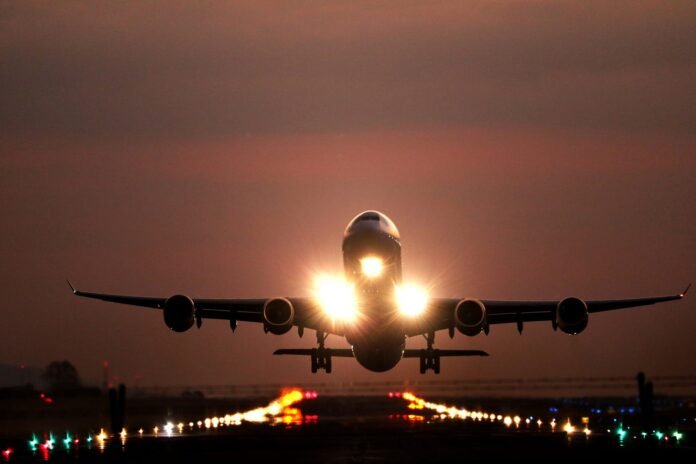Have you ever noticed that passengers board airplanes exclusively from the left side? This seemingly minor detail is more than just a quirk of air travel; it stems from a mix of tradition, practicality, and operational efficiency that has evolved over decades in aviation.
The practice of boarding from the left side dates back to the early days of aviation. During the formative years of commercial flight, most aircraft were designed with the cockpit on the left side. This design choice influenced several aspects of the aircraft’s layout and operation. When passengers boarded from the left, it allowed pilots and crew to manage their duties without obstruction, as the cockpit remained accessible and free from passenger traffic.
Another significant reason involves the design of aircraft and airport operations. The left-side boarding system is designed to align with the way aircraft are typically parked at gates. This configuration maximizes efficiency and minimizes congestion. Aircraft are generally parked with their left side facing the terminal building, making it straightforward for passengers to board from the left.
Additionally, the choice of boarding from the left also ties into the historical practices of aircraft design and maintenance. Early aviation standards established the left-side boarding tradition, and this practice has persisted due to its convenience and familiarity. The boarding process has remained consistent over the years, which helps streamline operations and reduces the risk of confusion for passengers and crew alike.
The left-side boarding practice also has practical benefits related to aircraft safety. By standardizing the boarding and disembarking process, airlines can ensure that evacuation procedures are clear and efficient in emergency situations. In the event of an emergency, passengers are more likely to be familiar with the procedure if it consistently involves boarding from the same side.
Moreover, boarding from the left side contributes to a more organized and less chaotic boarding experience. By directing passenger flow through a single side, airlines can better manage the boarding process, reduce bottlenecks, and enhance overall efficiency. This organization is crucial for maintaining timely departures and minimizing delays.
The boarding process itself is also influenced by aircraft design. Many aircraft have stairways and boarding bridges positioned to accommodate left-side boarding. This setup allows for a more streamlined transition from the terminal to the aircraft, improving the efficiency of the boarding process. It also ensures that passengers can enter and exit the aircraft smoothly, without the need for complex maneuvering or adjustments.
While the left-side boarding practice has become a norm, it’s important to recognize that this tradition is deeply embedded in the history of aviation. As aviation technology and practices have evolved, certain conventions have remained unchanged due to their established efficiency and effectiveness. Boarding from the left side is a prime example of how historical practices continue to influence modern aviation operations.
In essence, the reason passengers board from the left side is a blend of historical precedent, practical design considerations, and operational efficiency. This practice has been refined over time to ensure that the boarding process remains smooth, safe, and effective. By adhering to this tradition, airlines and airports can maintain a standardized process that benefits both passengers and crew.
Understanding the reasons behind this seemingly small detail provides insight into the complexities of aviation operations. It highlights the importance of consistency and efficiency in ensuring a positive travel experience. As air travel continues to evolve, certain practices, like boarding from the left side, will persist as part of the rich tapestry of aviation history and operation.
The tradition of left-side boarding extends beyond just efficiency; it also plays a role in the overall passenger experience. By adhering to this standard, airlines and airports are able to offer a more predictable and streamlined boarding process. This predictability reduces stress and confusion for travelers, who know what to expect and where to go upon arriving at the gate. The left-side boarding system has become a familiar aspect of air travel that passengers can easily navigate.
Another aspect to consider is the impact on airport infrastructure. Airports are designed with specific layouts to accommodate left-side boarding, including the placement of jet bridges, stairs, and signage. This infrastructure is built around the convention of left-side boarding, making it a practical choice for maintaining smooth operations. Changing this practice would require significant adjustments to airport designs and procedures, which could disrupt the established flow of operations and cause delays.
The consistency of left-side boarding also aids in staff training and coordination. Ground crew members and airline staff are trained to manage and facilitate this specific boarding process, ensuring that operations run smoothly and efficiently. This uniformity helps staff respond to any issues quickly and effectively, contributing to a more seamless travel experience for passengers.
Additionally, the tradition of left-side boarding has psychological benefits for passengers. Familiarity with the boarding process helps reduce anxiety, especially for frequent flyers. When passengers know what to expect, they can feel more at ease during the boarding process. This sense of order and predictability can contribute to a more positive overall experience, making air travel less stressful and more enjoyable.
As airlines continue to innovate and improve their services, the principles underlying left-side boarding will likely remain a key component of the boarding process. While technology and aircraft design evolve, the core practices that support efficient and safe boarding procedures will persist. The consistency of these practices helps maintain high standards of service and operational excellence in the aviation industry.
Furthermore, as airlines explore new ways to enhance the passenger experience, they often look for opportunities to improve the efficiency of boarding procedures. Innovations such as digital boarding passes, automated check-in kiosks, and advanced boarding systems are designed to complement the existing practices, including left-side boarding. These advancements aim to streamline the overall travel experience while preserving the established efficiency of traditional procedures.

